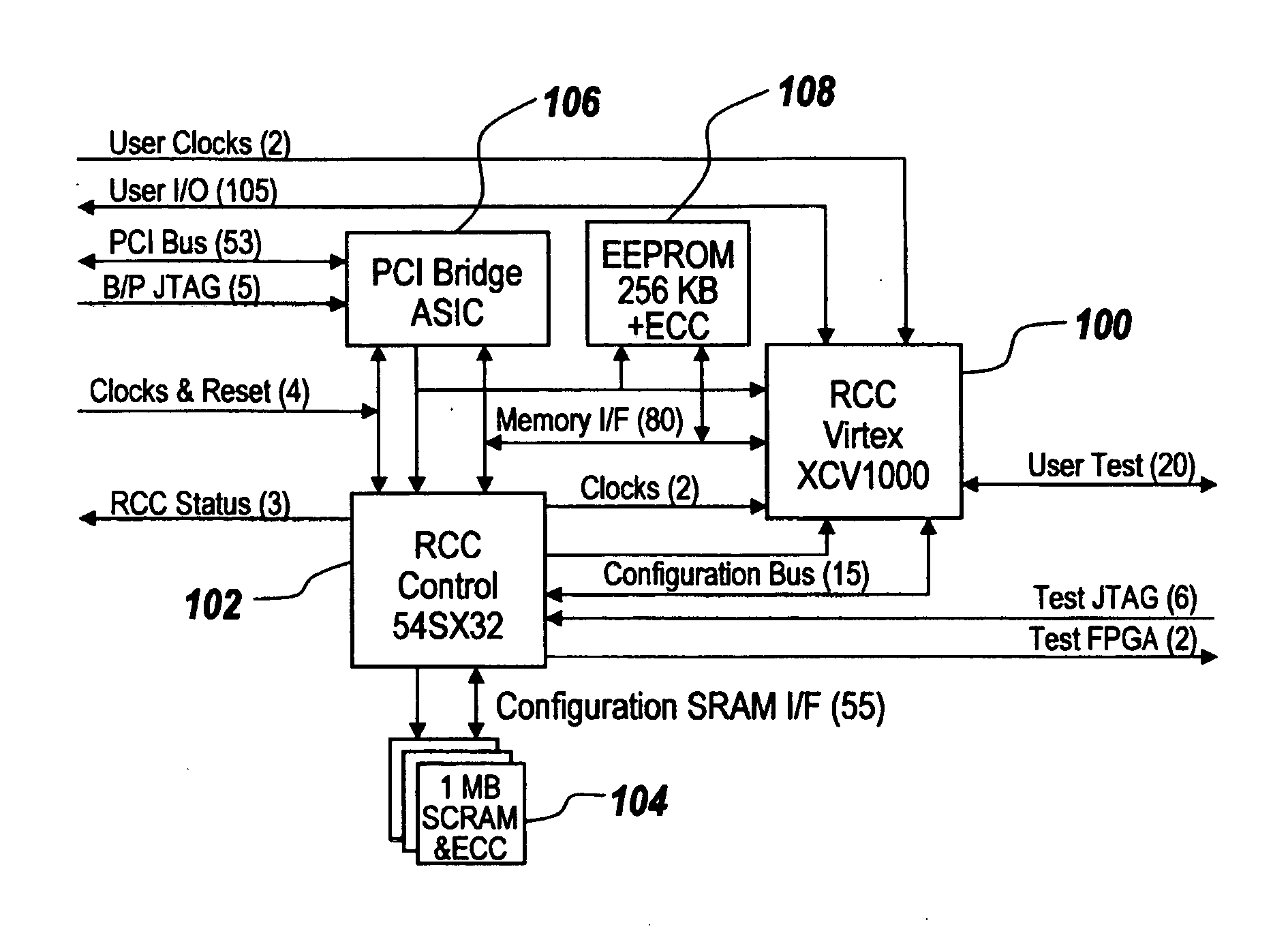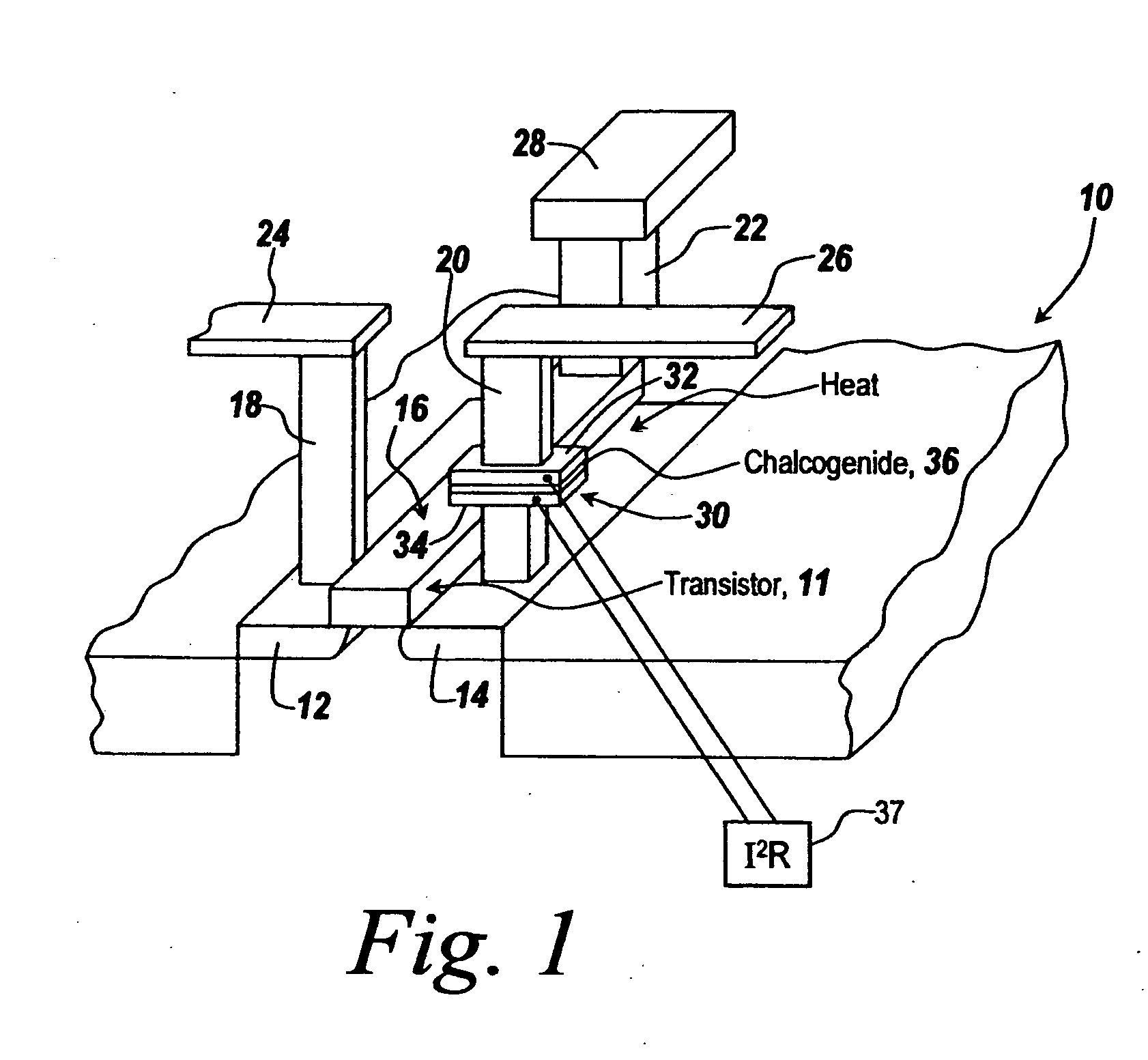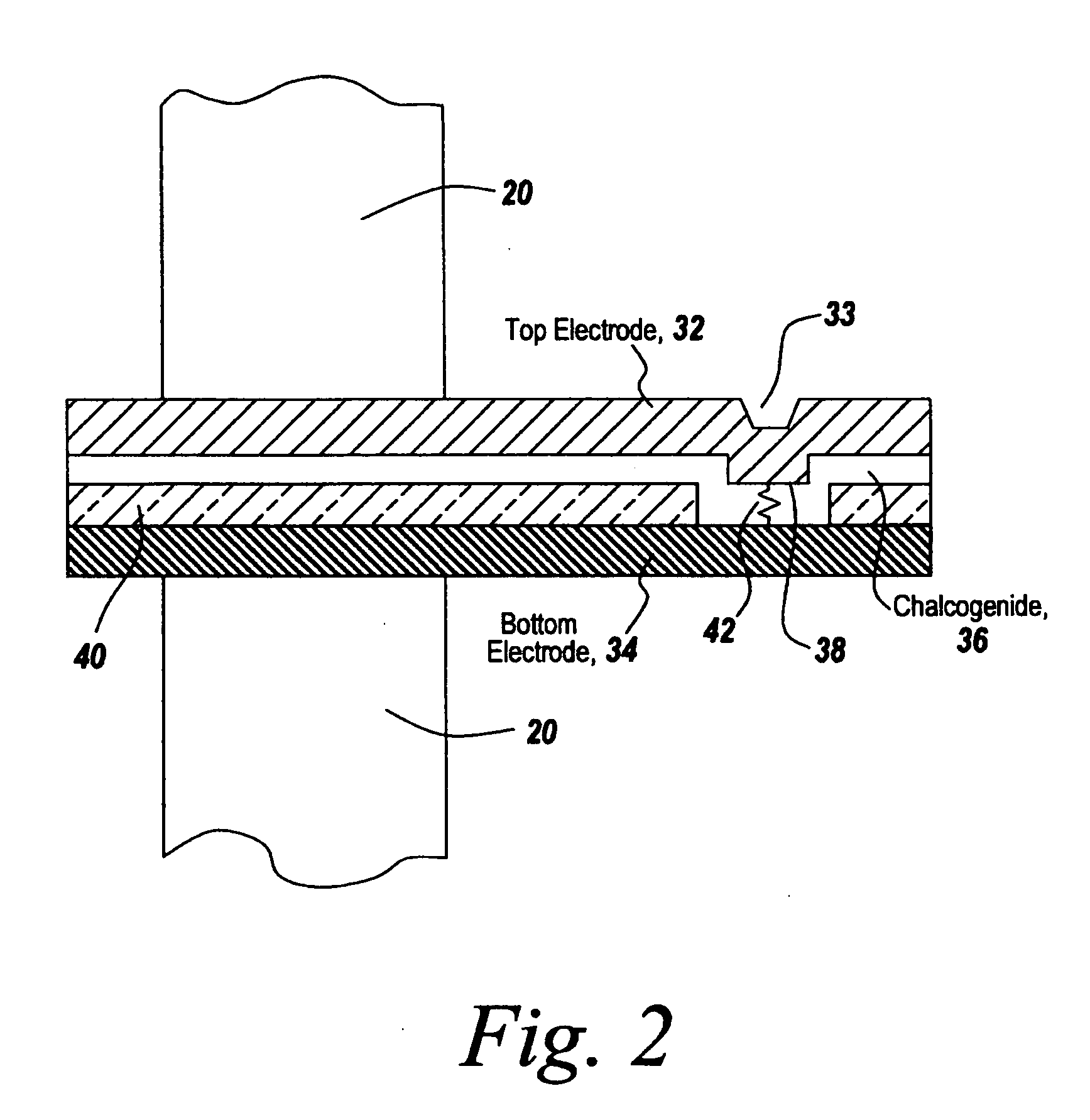Use of radiation-hardened chalcogenide technology for spaceborne reconfigurable digital processing systems
- Summary
- Abstract
- Description
- Claims
- Application Information
AI Technical Summary
Benefits of technology
Problems solved by technology
Method used
Image
Examples
Embodiment Construction
[0048] Referring now to FIG. 1, for radiation hardening, a simple transistor switch 10 is provided with either n- or p-doped regions 12 and 14 and a control gate 16, and is provided with leads 18, 20 and 22 in the form of studs that have respective lateral extending portions 24, 26 and 28.
[0049] Interposed in stud 20 is a fuse element 30, which includes a top electrode 32 and a bottom electrode 34 along with a chalcogenide-doped layer 36 sandwiched therebetween.
[0050] The chalcogenide material in one embodiment is a GeSbTe alloy that exists in a polycrystalline state at low temperatures and an amorphous state at high temperatures.
[0051] As can be seen at 37, an I2R current can be applied across electrodes 32 and 34 to heat the chalcogenide layer, thus to change the conductive properties of the chalcogenide layer from a low conducting state to a high conducting state.
[0052] Referring to FIG. 2 in which like reference characters are used between FIGS. 1 and 2, top electrode 32 in ...
PUM
 Login to View More
Login to View More Abstract
Description
Claims
Application Information
 Login to View More
Login to View More - R&D
- Intellectual Property
- Life Sciences
- Materials
- Tech Scout
- Unparalleled Data Quality
- Higher Quality Content
- 60% Fewer Hallucinations
Browse by: Latest US Patents, China's latest patents, Technical Efficacy Thesaurus, Application Domain, Technology Topic, Popular Technical Reports.
© 2025 PatSnap. All rights reserved.Legal|Privacy policy|Modern Slavery Act Transparency Statement|Sitemap|About US| Contact US: help@patsnap.com



